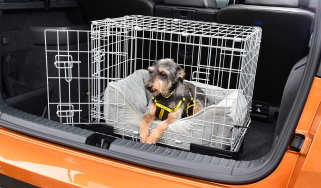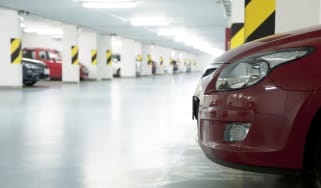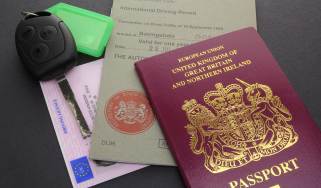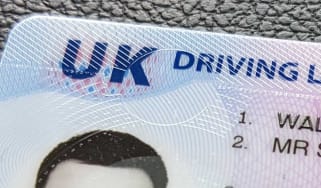Driving abroad: your holiday car guide
Driving abroad can be fun, family friendly and cost-effective, our tips will help you stay safe and legal on holiday
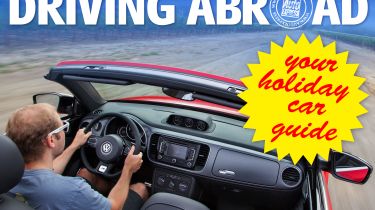
Driving in a foreign country can certainly be a nerve-wracking experience, but with a little planning, you can be sure to stay on the right side of the road – and the law.
If you’re taking your own car abroad, you’ll need to make sure it’s legal and safe to make the journey. The alternative is to hire a car when you get to your destination; this will also need a bit of preparation and research to ensure you don’t run into trouble or unnecessary expense.
Ferries and the Channel Tunnel tend to be crammed with vehicles during peak holiday times, showing that there’s no shortage of people who want to take advantage of their family car when on holiday. If you’re planning to join them on a trip to Europe then our travel checklist has been put together to help make sure you stay on the right side of the law.
Our guide to driving abroad has tips and advice on everything we can think of to give you a head start on your driving holiday. So read on and follow the links to find out about everything from hiring a car, to international driving licence requirements, toll road prices and foreign road sign info. This guide isn’t just for those hopping across the channel to drive in France either. If you’re planning to drive or hire a car and drive in Spain, or Italy, or even the USA, we have all the helpful information you need.
Driving abroad: the basics
Driving in France isn’t simply a matter of getting off the ferry on the other side of the road, as French driving habits and rules are different to our own in quite significant ways. The same goes for driving in Germany or Spain, or any of the host of foreign destinations accessible by car from the UK.
If you’re worried about driving on the right side of the road, the chances are you’ll only need a few kilometres of foreign motoring under your belt before you realise it’s more straightforward than you might have thought. But it helps enormously when you can concentrate on the road, signs and traffic, so it’s vital to make sure you understand the different rules, regulations and road etiquette that may apply before you set off.
How do you drive on the right-hand side of the road?
If you’ve never driven on the other side of the road, it can be daunting. But if you follow the road markings, signs and other traffic, it will soon become second nature. You are most likely to be caught out on rural roads where there are no lines on the road – especially at night and if you are driving a RHD car.
Below are our top five tips for driving on the right (wrong) side of the road...
- The centre line: Ensure you’re staying in lane by lining up the central road marking with the left-hand corner of the windscreen.
- Use your sat nav: The navigation system will tell you where to turn and can be especially useful as a reminder on roundabouts. It will also help you to steer through one-way systems where unfamiliar road signs can be confusing.
- Dual carriageways: Stick to the right-hand lane because this is the normal driving lane unless you are overtaking. It’s important to note the blind spot will be over your left shoulder, too.
- Turning left: You’ll be cutting across the traffic in this manoeuvre, so give way to oncoming vehicles – just like making a right turn in the UK. On fast-moving roads you may need to pull over to the right before swinging round to cross the road at a right angle. This prevents you causing a blockage while waiting to turn. Look out for the signs.
- Roundabouts: You’ll need to give way to the left rather than the right at roundabouts, and remember to signal right when exiting, too.
Do I need an International Driving Permit?
British drivers with a photocard licence issued in the UK don’t need an International Driving Permit to drive in the EU. However, in 140 other countries, including the USA, Turkey and Japan, one is either a legal requirement or recommended. The GOV.UK website has a list of each country’s requirements. The permit costs £5.50 and you can apply for one from larger Post Office branches.
Do I need European breakdown cover?
There is no legal requirement for European breakdown cover, but it’s a sensible safety net if the worst should happen.
Before you pay for cover, check your existing car insurance and breakdown policies to find out whether there’s any European cover included. If you have a newer car or recently bought it from a dealer, cover in Europe might be included as part of the warranty – although the benefits may be limited and you might want to upgrade.
Single-trip cover is cheaper, but if you expect to drive abroad several times a year, annual cover may be better value.
Do I need to have a car insurance ‘green card’?
UK residents driving in the EU do not need to carry a special document proving they have insurance for driving abroad. These documents are known as a insurance ‘green card’, although they don't have to be green – or even a card! A green card will, however, be needed if you intend to drive your car in many countries outside the EU.
To apply for one, you simply need to telephone your insurer and ask; it will usually be e-mailed across with no charge or only a small admin fee. Check that the cover is the same as you have in the UK rather than just being the legal minimum, and tell your insurer exactly where you’re going. That will ensure the green card is valid in every country you’re travelling through.
If you have car insurance in the UK you will automatically have third party cover in the EU. Most people driving abroad will want to get fully comprehensive insurance for travelling in Europe, however, and for this you will need to check your insurance policy to see exactly what is covered. It may be included or you may have to make special arrangements with your insurer. In any case, it's important to carry details of your insurance policy with you when driving your car abroad.
How can I save money on a hire car?
For a car enthusiast, renting a vehicle on holiday can be great fun. You’re never quite sure what you’ll get and it’s a chance to drive something different. It’s also less stressful to let the hire company take care of all the legal necessities, such as the high-visibility jackets, winter tyres and warning triangles, that you may need when driving abroad. But you still need to be on your guard to make sure your hire car doesn’t empty your wallet.
First, make sure you have the right licence to drive in the country you are visiting; you may need an International Driving Permit if it is outside Europe. You will also need to check that you are within the age range specified by the hire company; there will be upper and lower limits, but these can sometimes be stretched for an extra fee.
When looking for deals online, check out the insurance restrictions. Many have basic cover but suggest you upgrade to a more comprehensive package. It’s usually cheaper to arrange this with a third-party company before you leave.
Also take note of the situation with fuel. Some firms supply the car with a full tank and insist you return it full. Check where the nearest filling station is to the airport and leave time to top up on your return, or you will be charged a steep fee.
Finally, make a note of any existing damage to the car before you leave the company lot, preferably with photos, and try to get the details acknowledged by a member of staff.
Driving abroad: everything you need to know
- Holiday car hire: scams, tips and how to get a great deal
- Driving on the right: we take our left-hand drive test
- European breakdown cover: top tips
- International driving permit: do I need one?
- What is a car insurance green card?
- Driving in France
- Driving in Spain
- Driving in Italy
- Driving in the USA
- Driving in Europe after Brexit
What are your top tips for driving abroad? Let us know in the comments section below...


